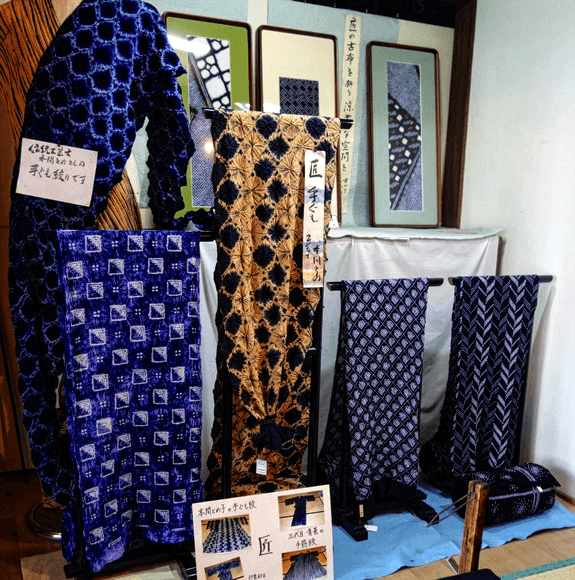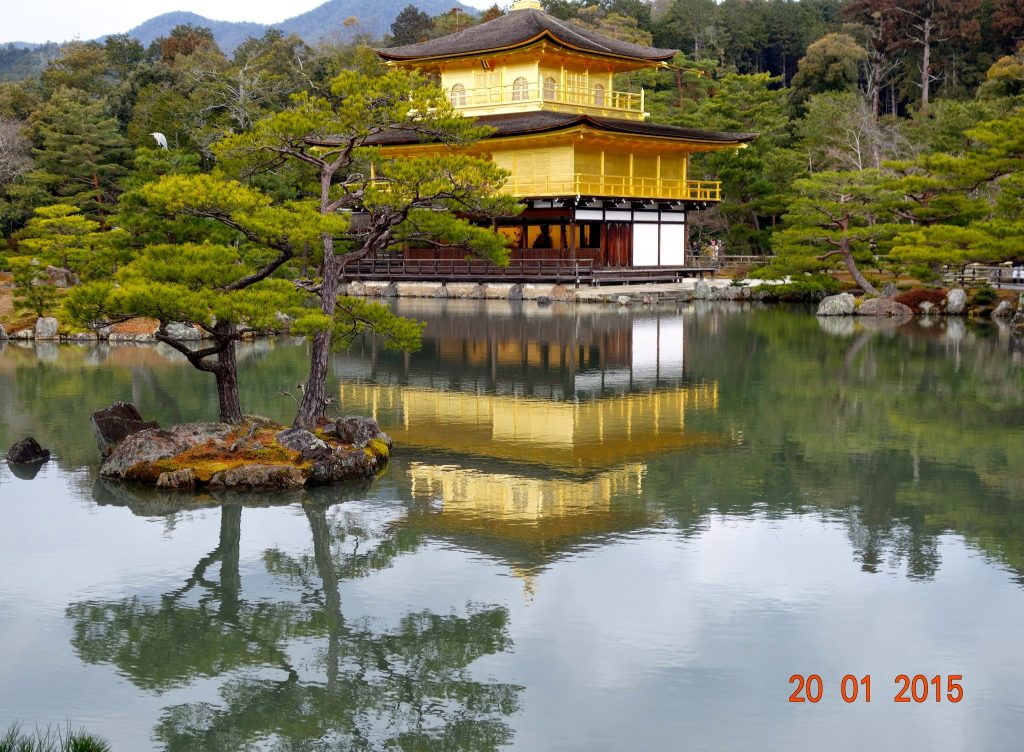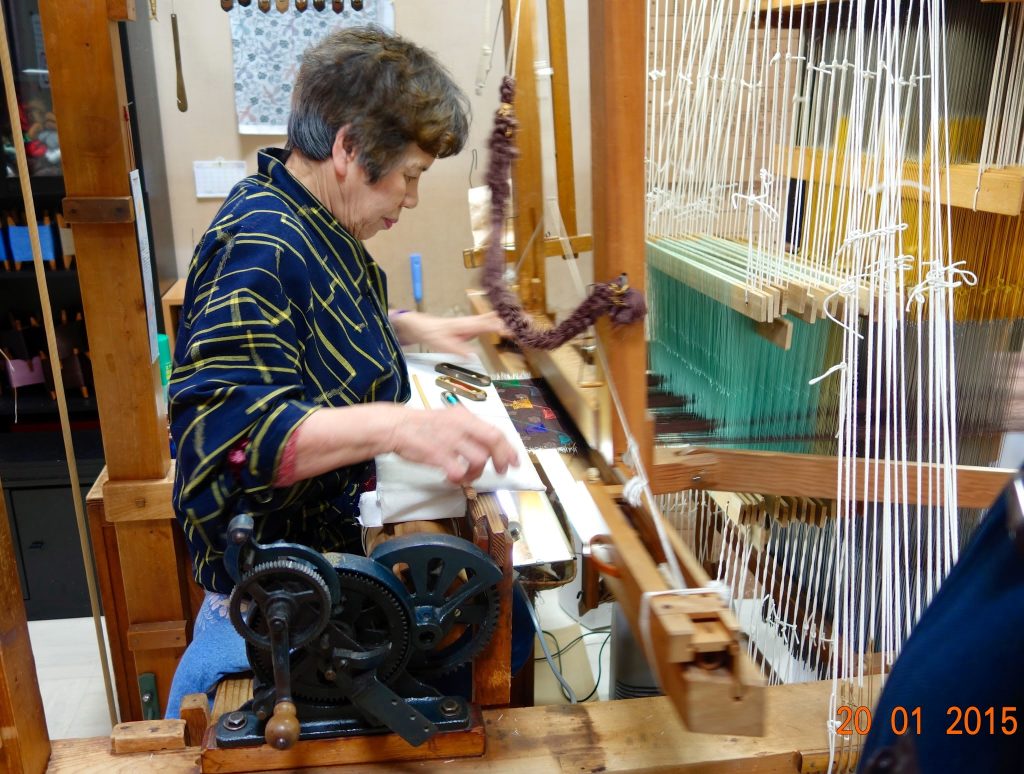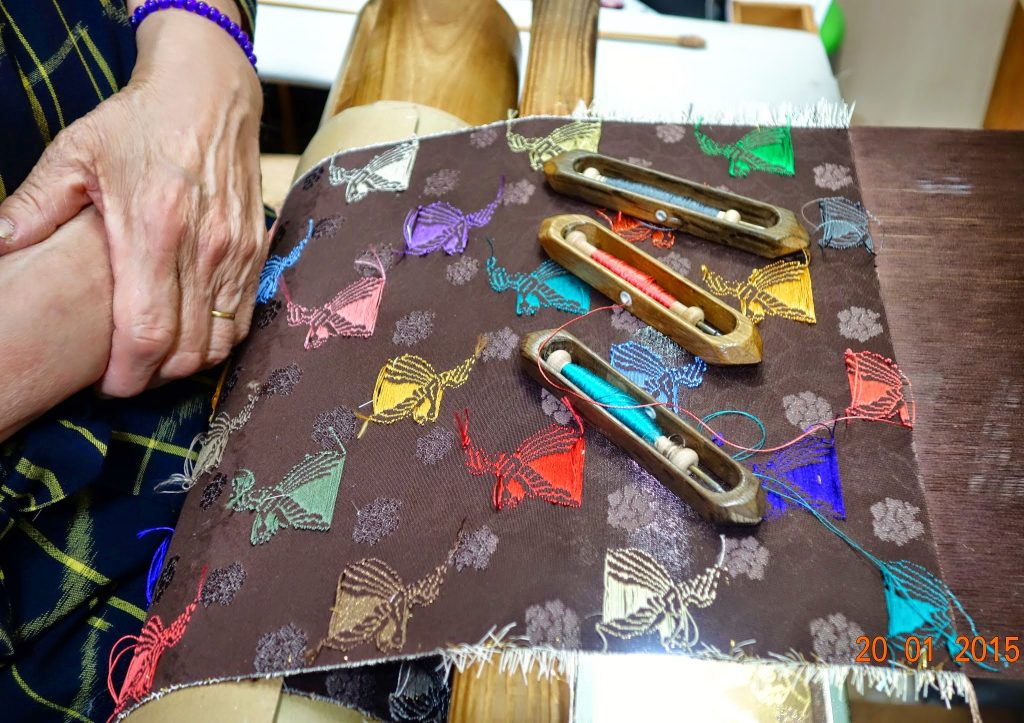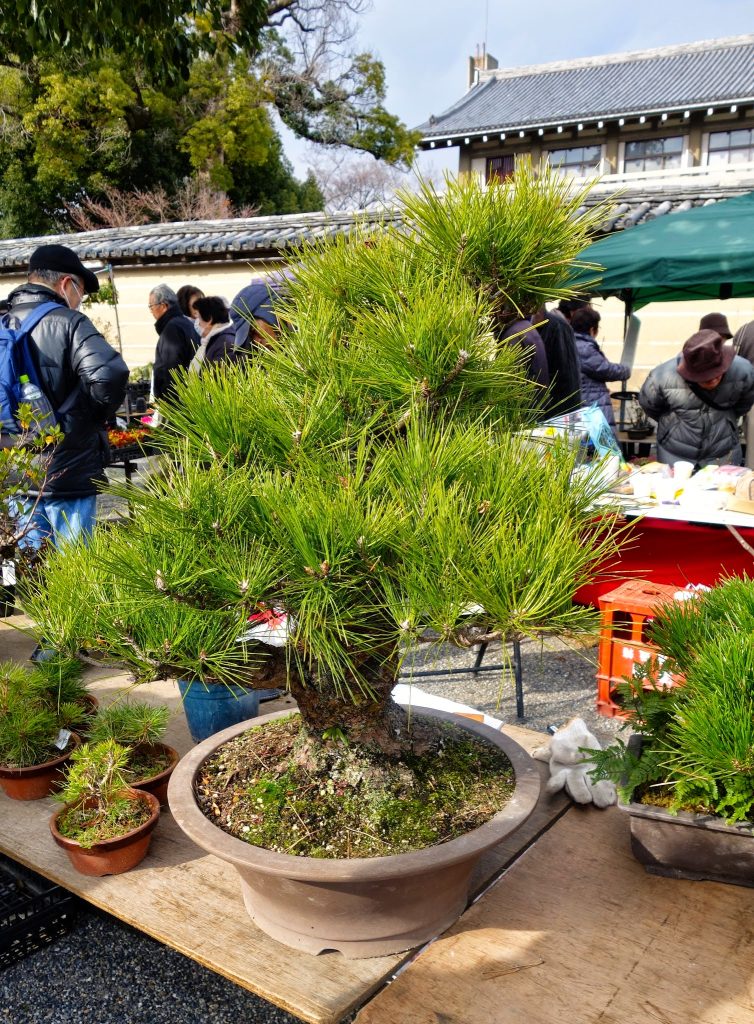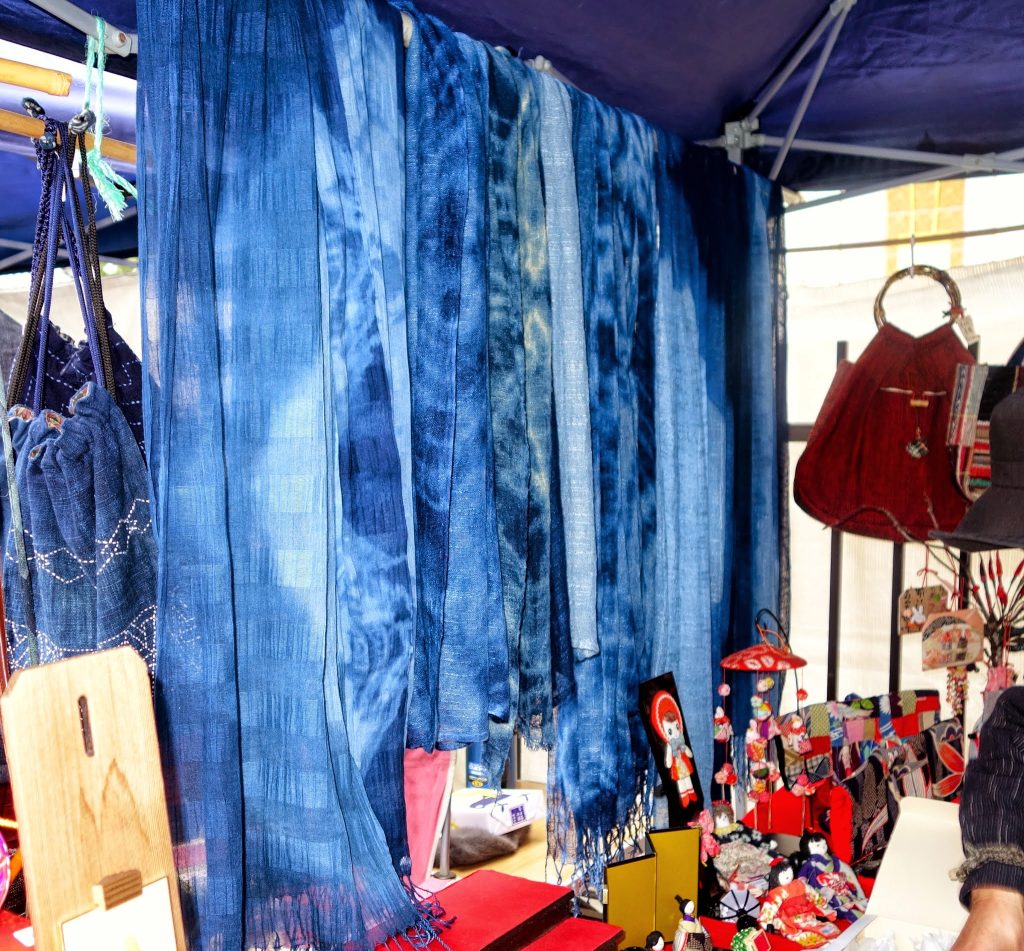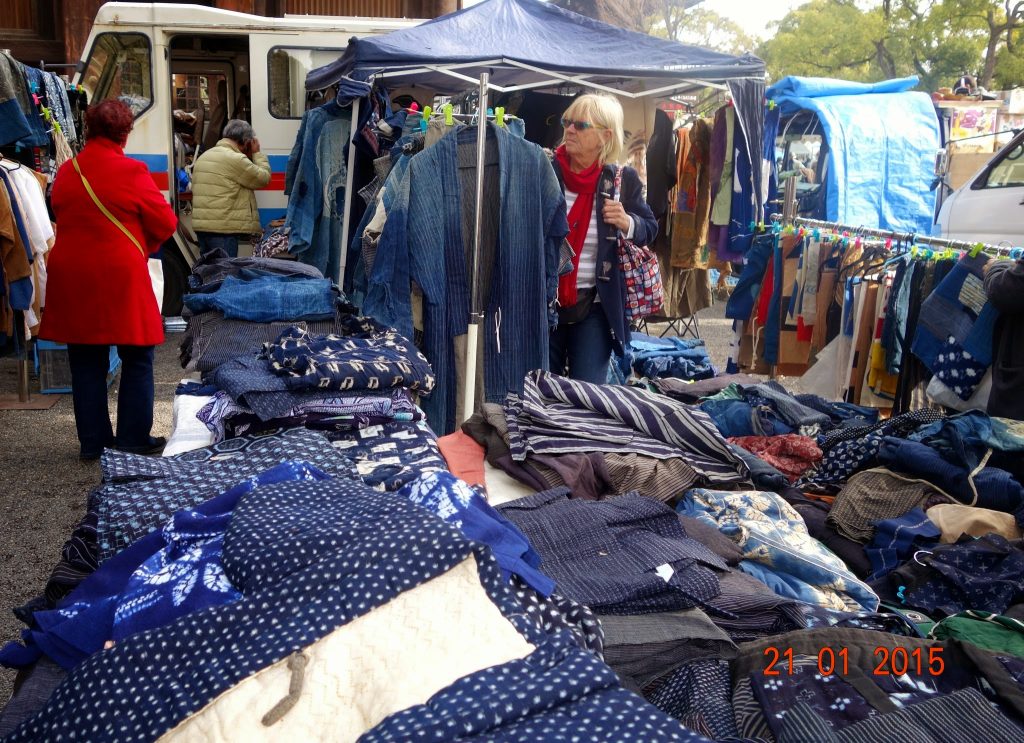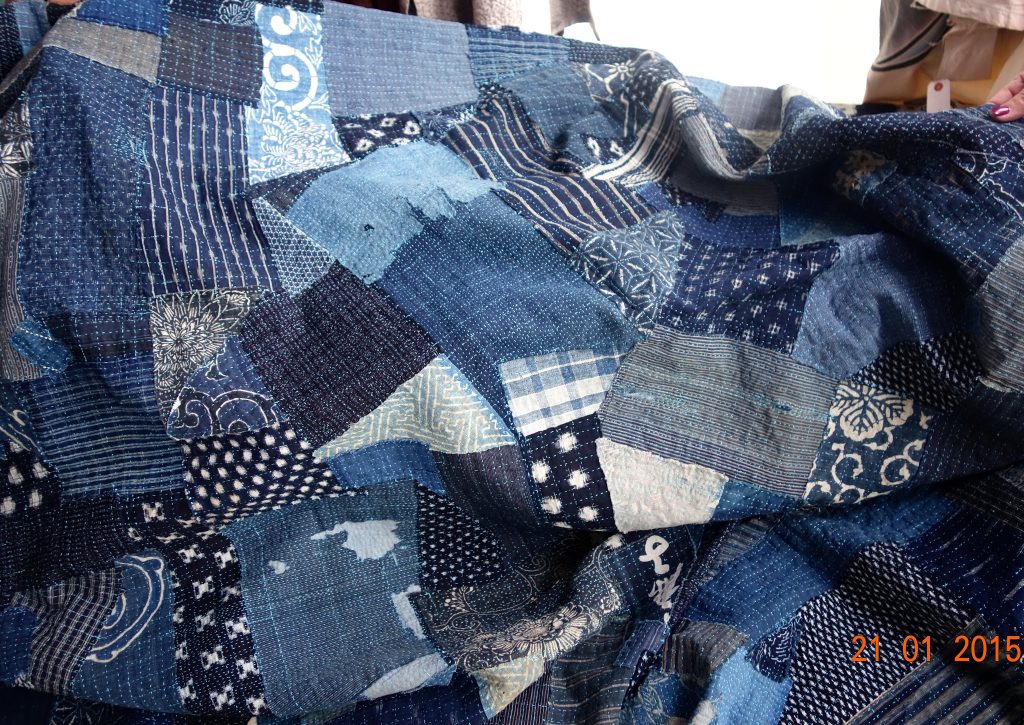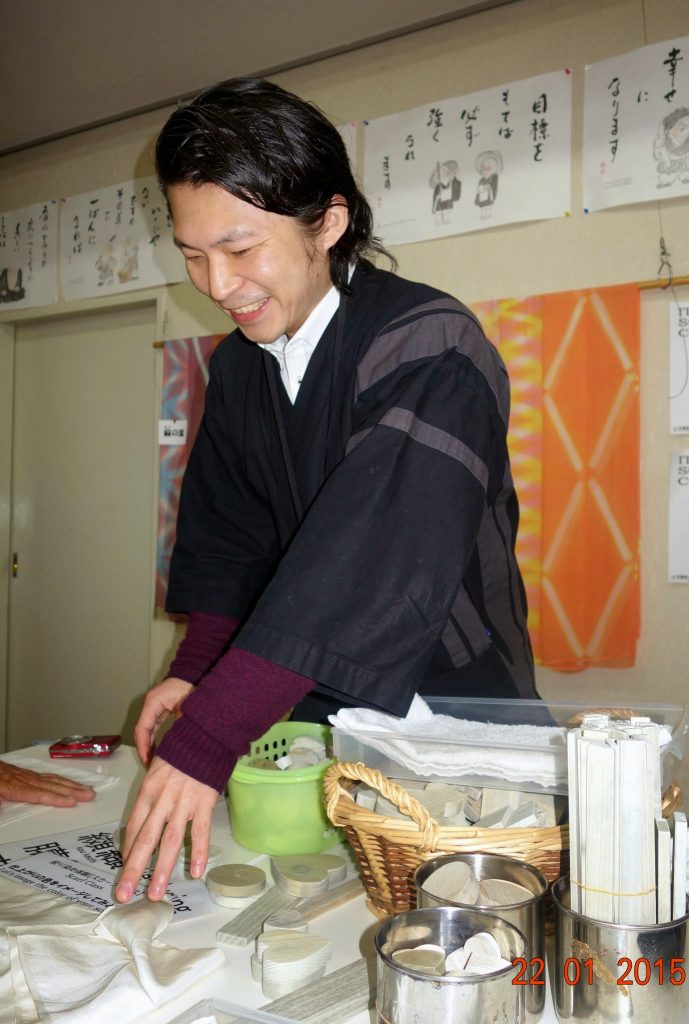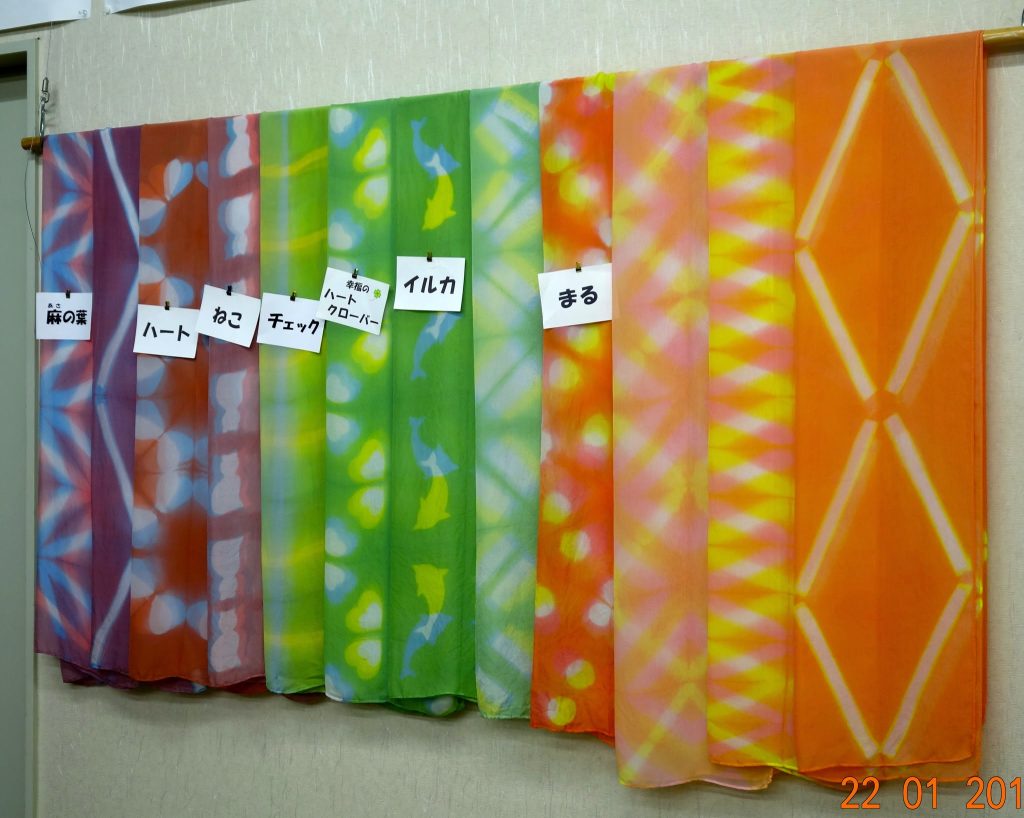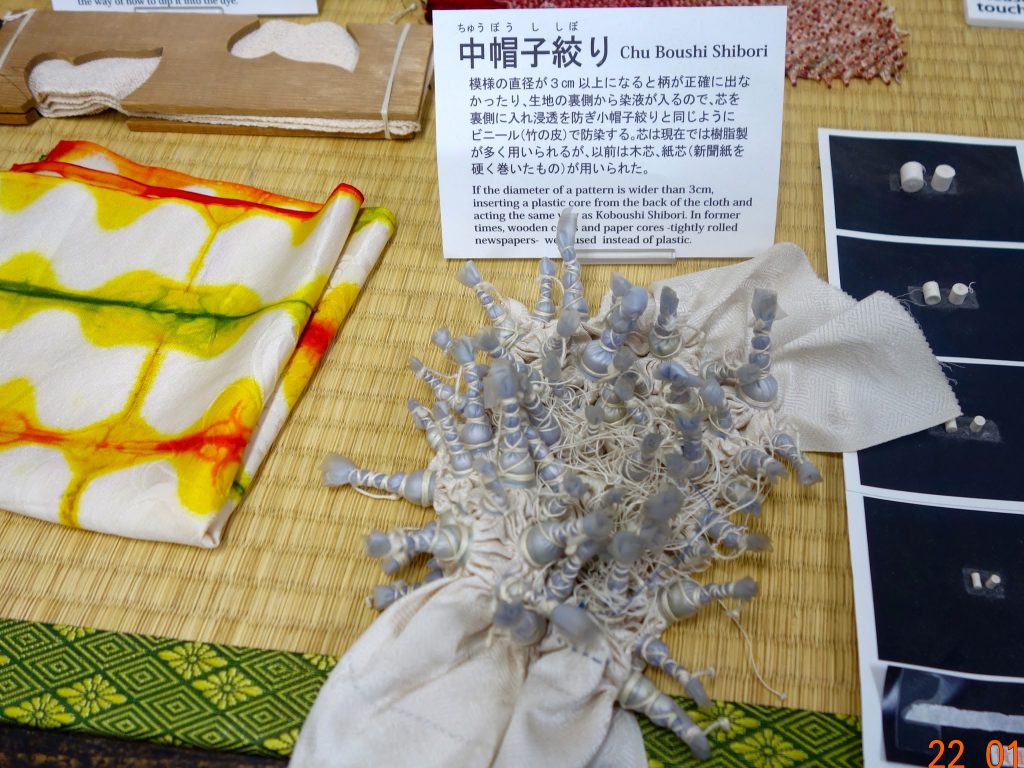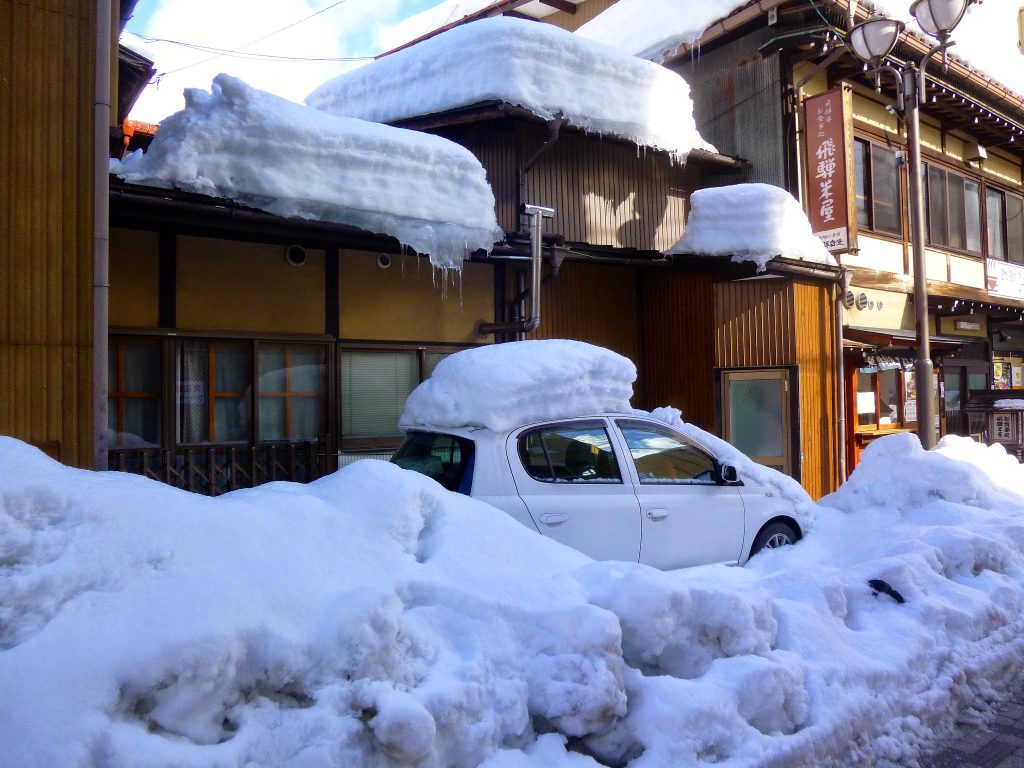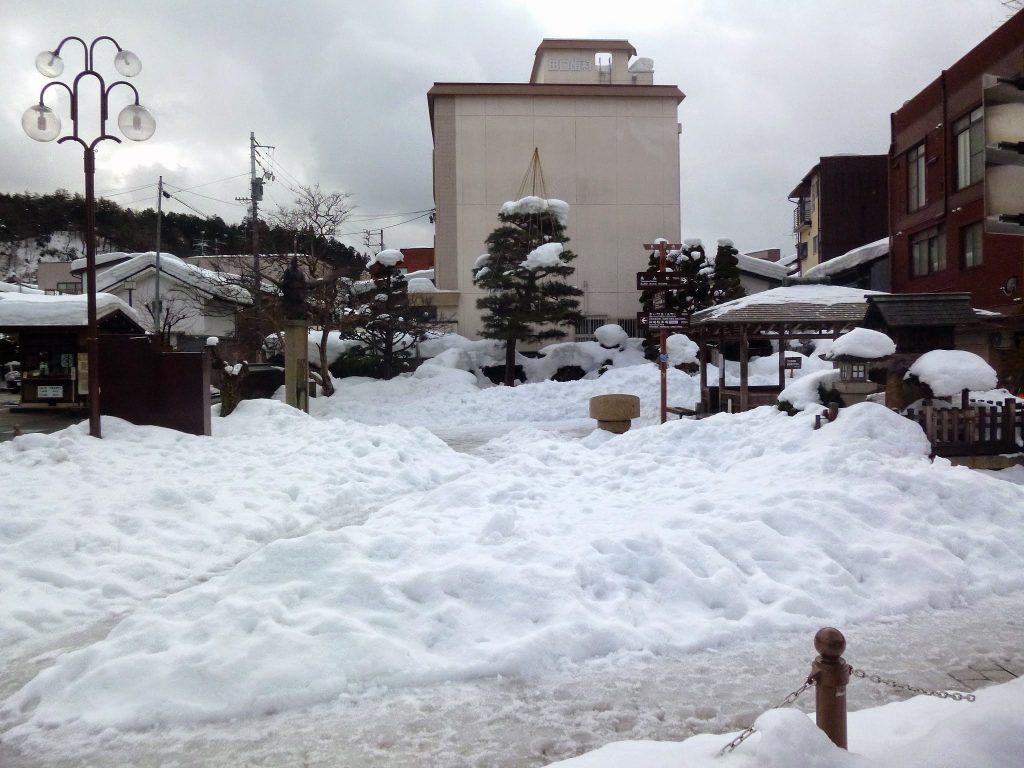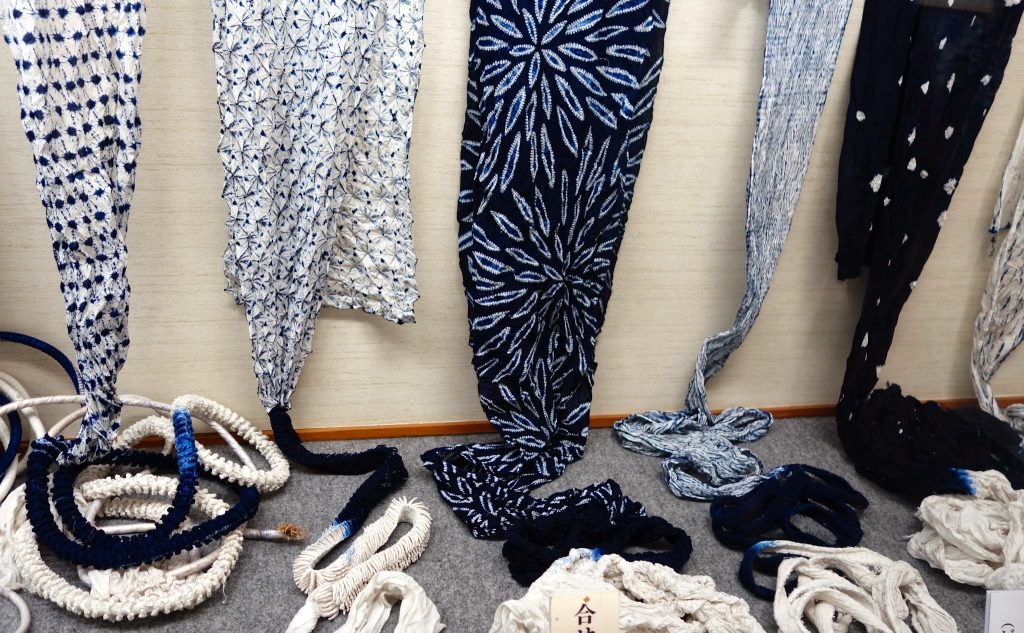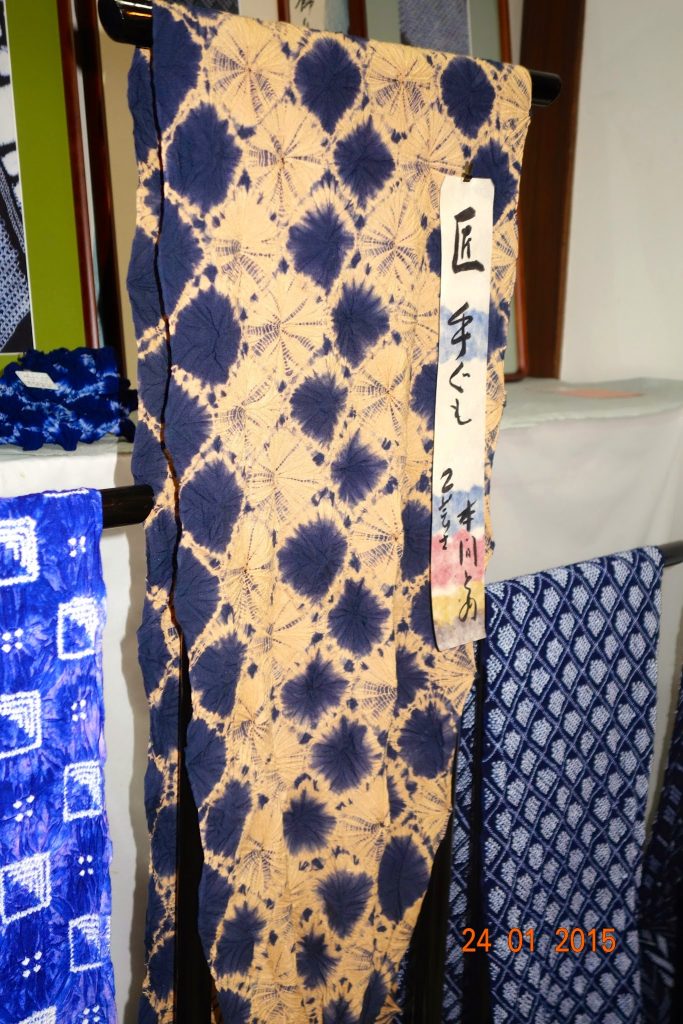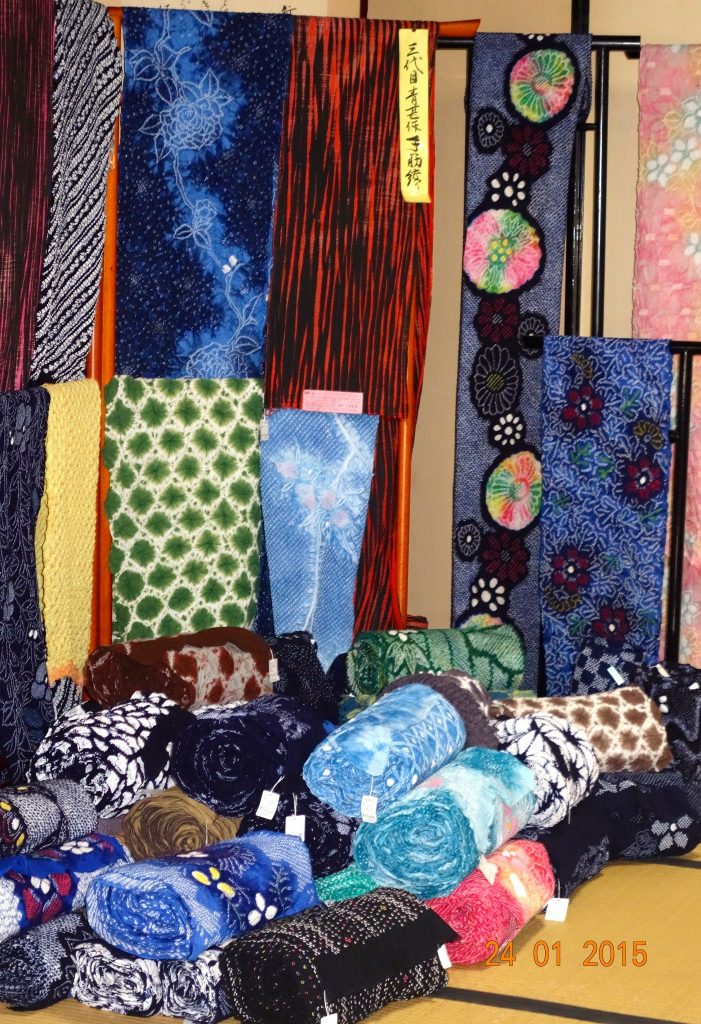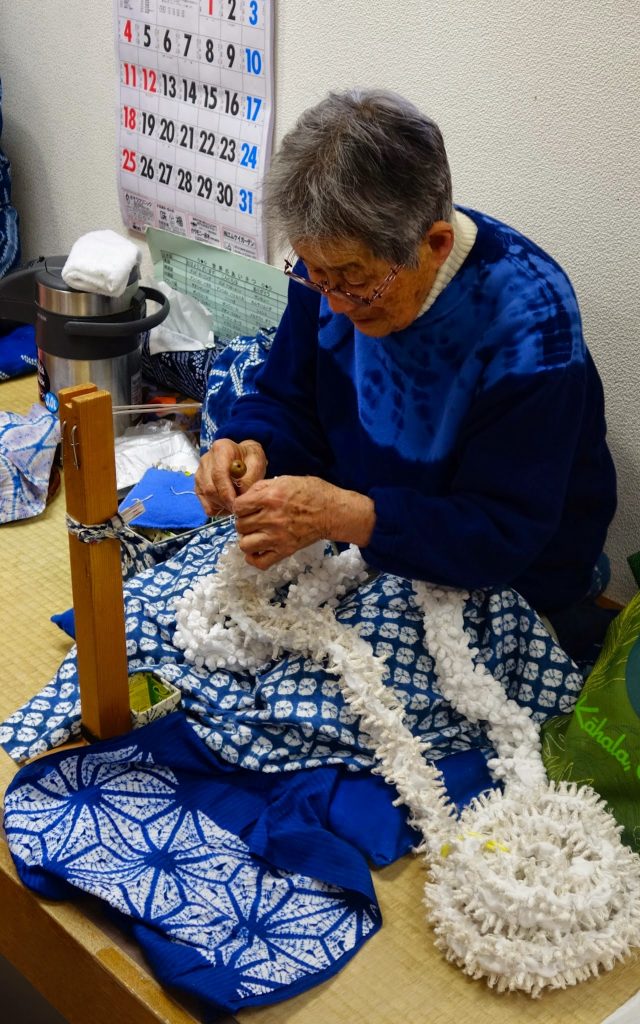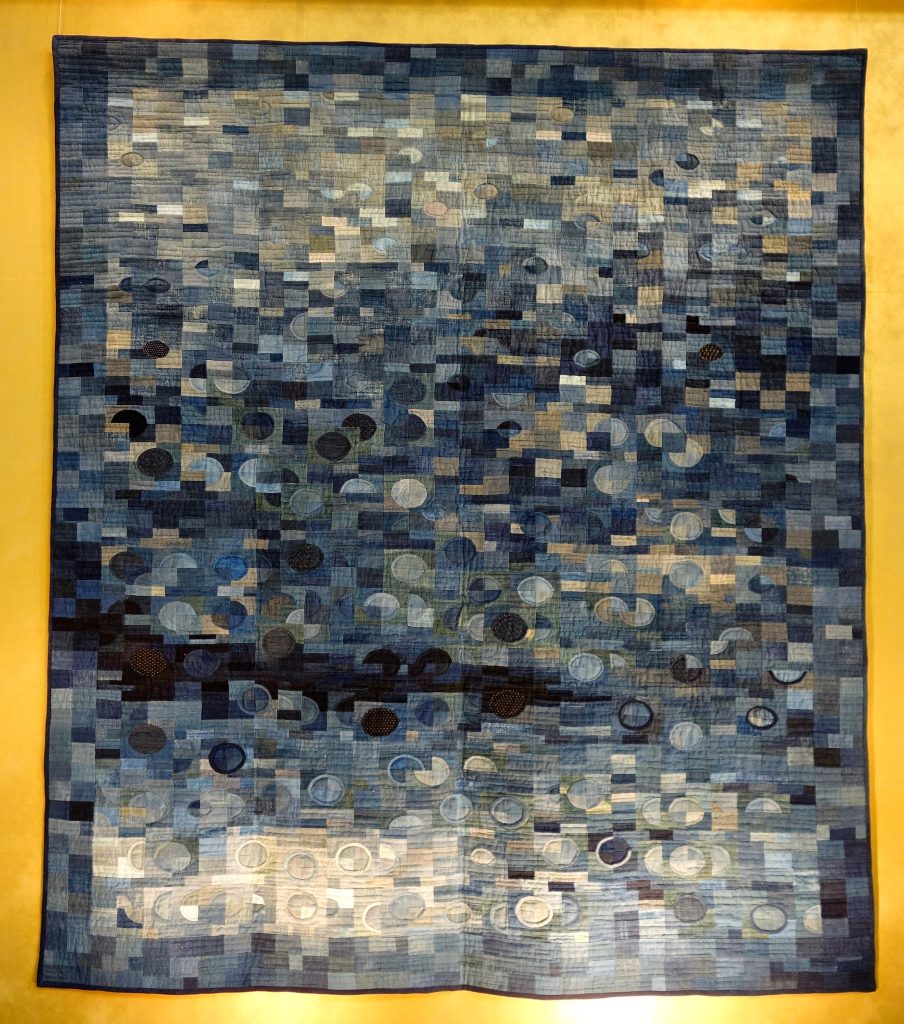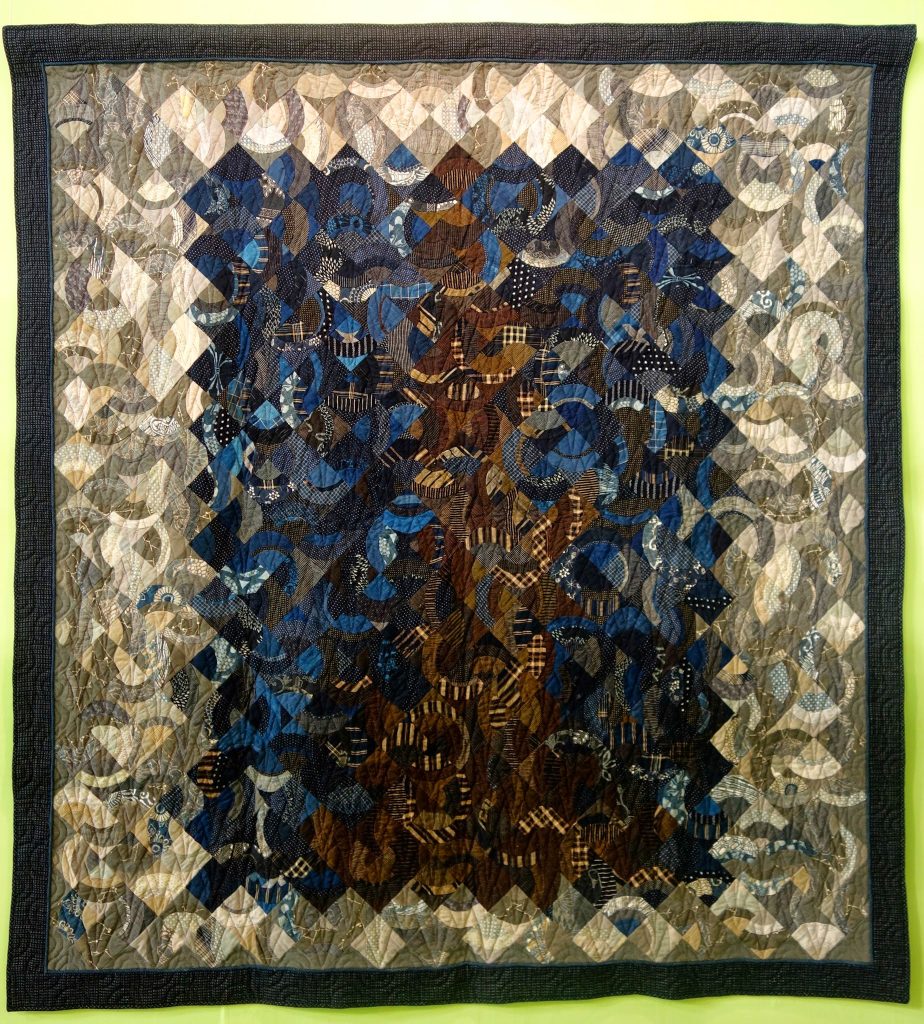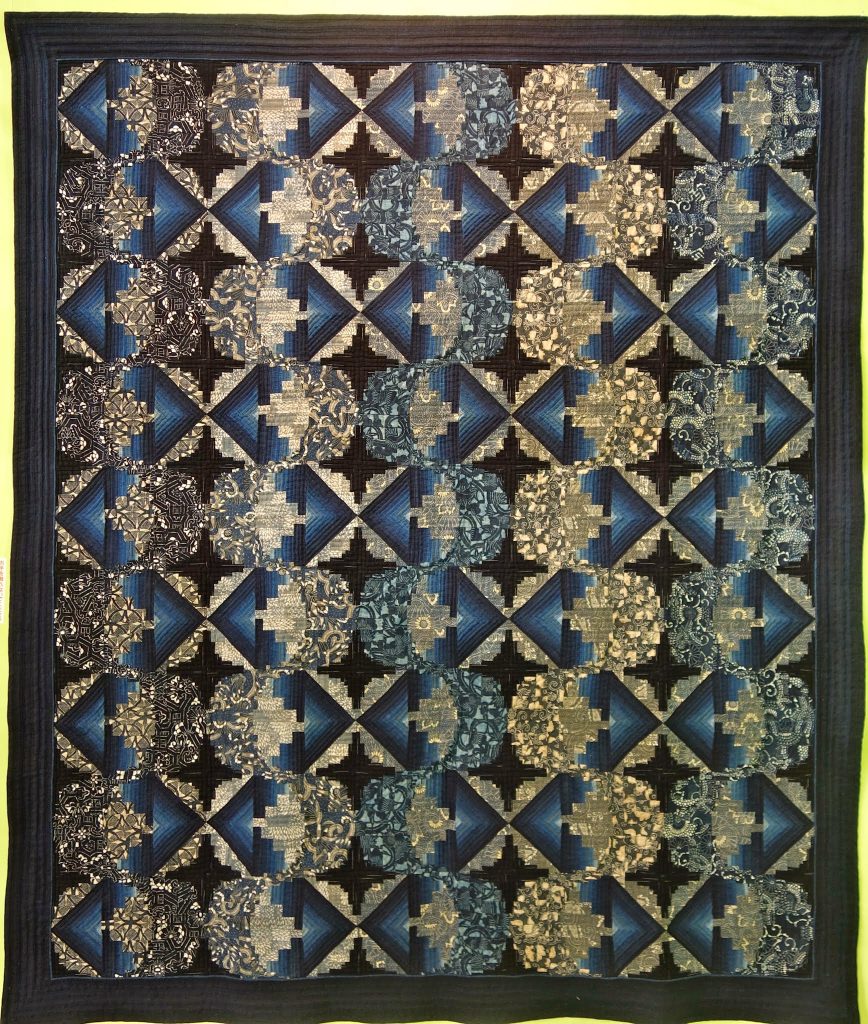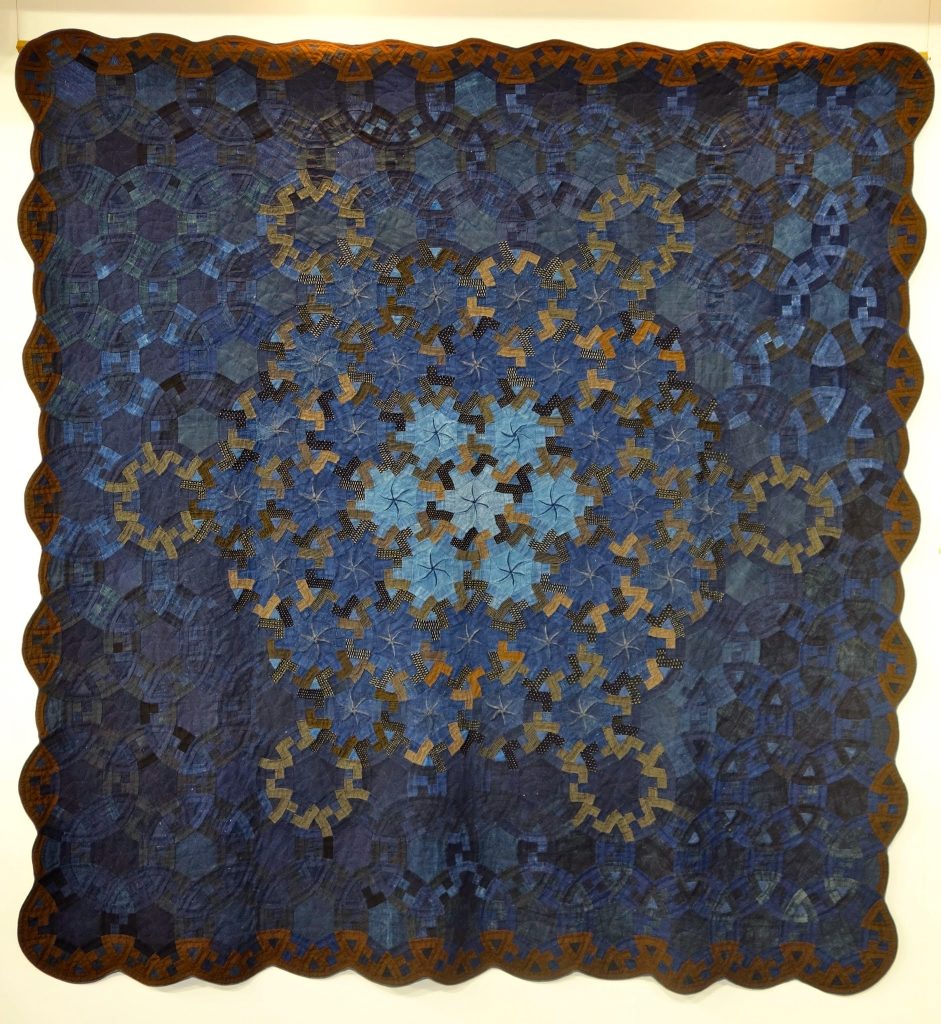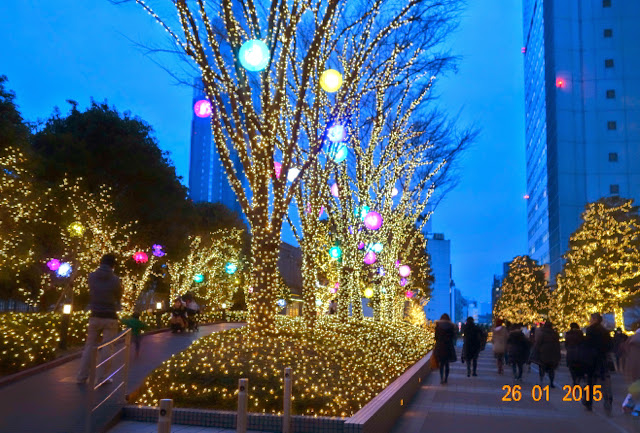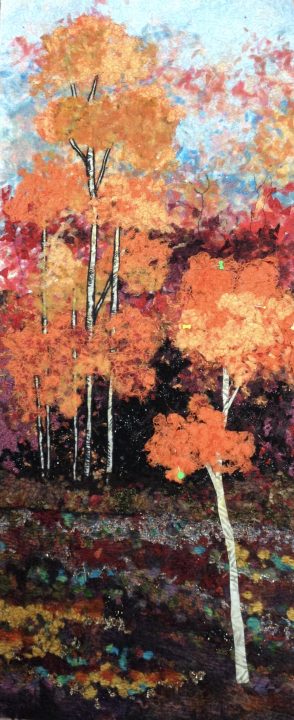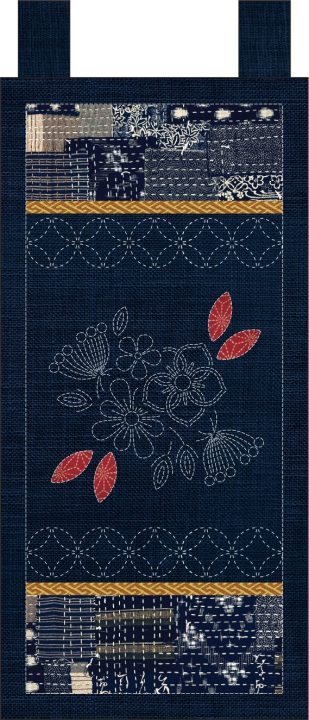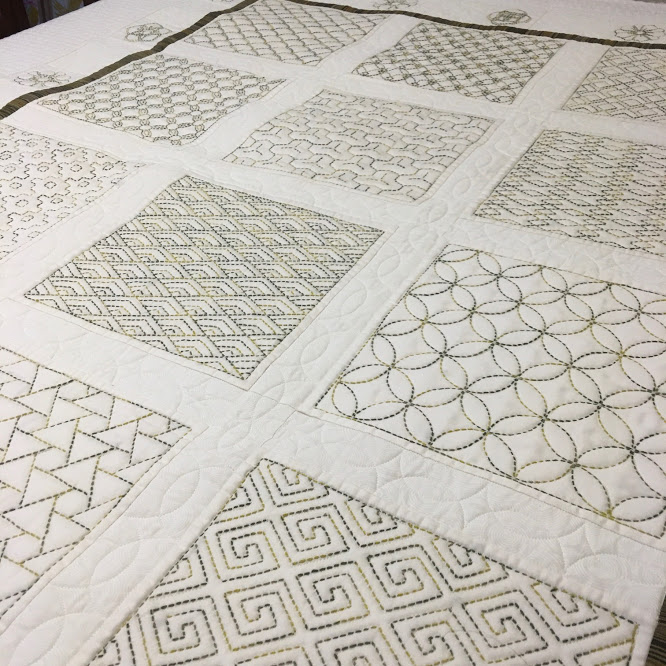In late January we embarked on one of our semi-regular visits to Japan. We like to be exposed to the true cultural roots of our chosen craft as much as we can, and to pick up bits of inspiration for our designs along the way. This year’s trip was motivated by a need to recharge our batteries as much as anything else. We had just finished a refit of our beloved workshop after the brutal storm that hit Brisbane last November, so we were due for a break.
The Tokyo International Great Quilt Festival was naturally a priority for the itinerary, however every trip we take to Japan stimulates a desire to try new things, so this time around we made a point of seeing as much shibori as possible.
It was of course a delight to escape the oppressive heat of Brisbane for some cold weather, too!
January 20
We kicked things off with a bit of sightseeing in Kyoto.
We decided to ease into things with a couple of well-known Kyoto spots: The Golden Pavilion and the Nishijin Textile Centre.
The Golden Pavilion consists of a breathtaking Zen Buddhist temple plated in gold leaf, surrounded by a body of water known as the Mirror Pond. (It’s technically a converted Zen Buddhist temple). It was built in the late 14th Century to serve as a retirement villa for Shogun Ashikaga, before his son converted it to a house of Zen worship. Beholding the total scene’s delicately serenity had an immediate calming effect.
We managed to get some beautiful shots of it reflected in the splendid Mirror Pond.
Nishijin Textile Centre
Kyoto’s Nishijin Textile Centre is a very busy spot, but we chose it because it’s in Kyoto’s traditional weaving district. Upon arrival we opted to head upstairs to have a look at the traditional looms used to make kimono fabric.
We were in luck, as one of the Nishijin ladies was in the middle of producing a beautiful silk obi.
It would take an hour to produce just three centimetres of fabric on this loom.
January 21
We absolutely loved the Toji Temple Market with its wonderfully busy atmosphere.
As soon as we stepped through the temple gates we were greeted with an explosion of activity: hundreds of vendors all stripes, all of them offering genuine grass-roots wares. The term ‘vintage’ gets thrown around a lot but this was real vintage. It was quite something to walk over to a stall to see someone casually selling beautiful old kimonos, boro clothing and old-fashioned Japanese crockery.
There was just too much to soak up in one session, we honestly could have spent days here.
These markets have quite a history. The temple’s principle image is Yakushi Nyorai, the Medicine Buddha. Market vendors have been setting up on the 21st of each month for hundreds of years, catering to the thousands of monthly pilgrims who would travel here to pray for good health.
Swandale Quilting’s designer Cathy Schibrowski joined us for the trip. Here she is sampling some wares.
It goes without saying that we found ourselves drawn to fabrics both old and new: old boro, and new sashiko pieces.
Some real highlights for us were the absolutely gorgeous Kasuri and hemp fabrics, some exquisite indigo-dyed hemp and silk scarves, as well as a beautiful quilt made from a variety of Kasuri fabrics with Sashiko stitching. All of it stunning.
January 22
Kyoto Shibori Museum
We couldn’t pass up the offer of a shibori workshop. It made the difference between a great and a perfect morning.
We visited the art museum, where we examined samples of many Shibori techniques, from Mokumenui to Hinode. Not all, however, as there are at least 100 known methods. We then moved on to the industrial arts hall, where we did our workshop. We were taken through the clamping method of shibori.
January 22-23
We followed up this wonderful morning with a visit to snow-covered Takayama.
Takayama is in what’s known as a gōsetsu-chitai (heavy snow) area of Japan. We barely noticed the four hour train ride from Kyoto.
This picturesque winter wonderland was such a great contrast to Brisbane Summer.
January 24
We took the train from Nagoya to Arimatsu and uncovered an absolute treasure trove of Shibori.
What a discovery and what a highlight! Arimatsu’s connection to shibori can be traced back to the early 1600s, and holds an annual shibori festival each June.
We really felt fortunate to visit a place where shibori is part of the culture itself. The Arimatsu-Narumi Shibori Kaikan is the town’s exhibition hall, and it houses an absolutely superb range of shibori work. We managed to get some lovely photos…
It’s difficult to overstate how much we enjoyed this—such fascinating work and such a glorious spectrum of colour. If you’re interested in Shibori on any level, the Arimatsu-Narumi Shibori Kaikan should be an essential part of your Japanese fabric itinerary.
January 25 – 26
Tokyo International Great Quilt Festival
Tokyo Great International Quilt Festival is held every year at the Tokyo Dome, which is a huge indoor venue. Every time we have attended, we’ve found ourselves astonished by the sheer scale of quality work on display.
The Tokyo Quilt Grand Prize was a stunning quilt by Etsuko Misaka in the colours of indigo, a beautiful grading of indigo fabrics in an assortment of shapes. It’s difficult for a photograph to convey the complex detail going on in this quilt.
There were so many quilts on display that were made from indigo fabrics, each strikingly unique, so appealing and beautifully crafted.
There seemed no end to the possible effects, from the byzantine to the kaleidoscopic.
We’ve included a shot of the crowd from the festival, just to give you an idea of the size and scope of this event. Bear in mind that this photo was taken on day three of the festival.
We had the Tokyo Festival of Light to stroll through when each day was done. A perfect counterpart to the serious crowds.
From a deeper understanding and appreciation of shibori techniques to enchanting design possibilities for indigo quilts, this trip to Japan has had the desired effect on us.
It has given us the impetus to evolve our sashiko designs from last year’s Threaded Pathways concept to something new, which we look forward to sharing with you all.
For news of future blog entries, be sure to subscribe to our newsletter.
‘Til next time,
Sue.

